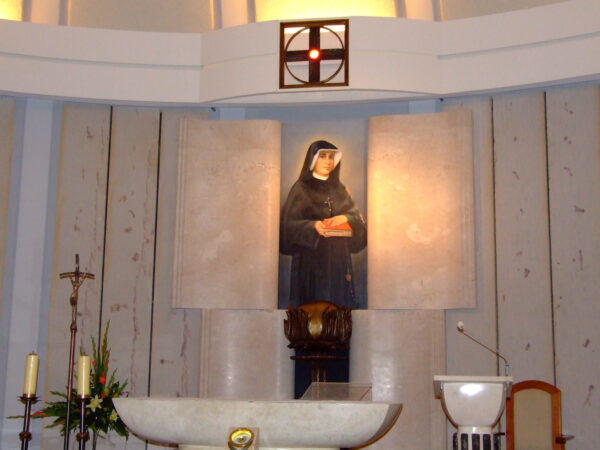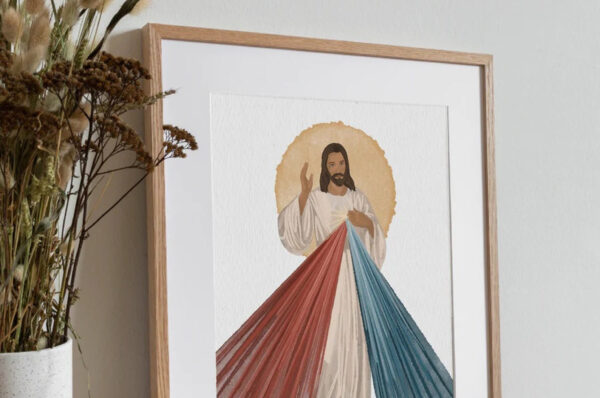A year ago, I really didn’t know much about St. Elizabeth of the Trinity. Then I read Claire Dwyer’s book “This Present Paradise: A Spiritual Journey with St. Elizabeth of theTrinity,” and I can’t stop recommending it.
While it would be easy to rush through the chapters of Dwyer’s book, it is recommended to read it slowly, maybe just a chapter or two a day. Plus, what makes this book so wonderful for spiritual reading is that each of the chapters provides questions for reflection, which are great for praying with and bringing to Adoration.
Want more Radiant? Sign up for our weekly newsletter!
(Note: If you start reading in early Advent and read a couple chapters a day, you could be finished by Christmas! Or, if you pick it up midway through the liturgical season, space out the reading so it lasts until Epiphany.)
Small offerings
Elizabeth was born near Dijon, France, in 1880. As a young girl she had confidence in the gift that her small offerings could make. As Dwyer writes, “she only had her daily life to offer: eating what was before her, giving way to her sister, promptly obeying her mother, putting herself aside in the choice of games when she was with her friends.” She praised the Lord through these daily decisions. Yet as adults, we are so often looking for distinct signs to point us in the way we should go, “but more likely our path is made of breadcrumbs and fingerprints, pointing the way to heaven in smudges of peanut butter. It’s the little things.” Holiness is found in these little things; it is just determined by our faithfulness and disposition. Are we completing our daily tasks begrudgingly, or as an offering to the Lord?
Patience in postponement
One day when she was visiting the city’s Carmelite monastery, the mother superior handed her the circular letter of Thérèse of Lisieux. Circular letters are sent out by Carmelite orders when one of their sisters passes away. It is meant to be shared with others to provide information about that sister’s life. This particular letter which Elizabeth received would turn out to be the text for “Story of a Soul,” and it proved to be a helpful tool for Elizabeth in the discernment of her own vocation, which turned out to be a call to Carmel.
However, this call would have to be postponed for years longer than Elizabeth would have liked as Elizabeth’s mother would not allow her to enter Carmel until she turned 21. This was a great cross for Elizabeth, as she could see the convent from her very own bedroom, a room she would have loved to trade in for a small cell. Yet it was here that “she became aware that there was a cell in her soul, designed by the Holy Spirit, one where she could hold constant vigil, with a little sanctuary lamp burning continually in her heart.”
Sacrifices and suffering
Since childhood, Elizabeth was known to have a gift for music. For her, playing music was a prayer. However, this was a form of prayer she would have to give up after entering Carmel.
How often are we, too, asked to give something up in order to make room for a higher good? St. Josemaria Escrivá wrote, “Our Lord is more honored by the immolation of your talents than by their vain use.” As Dwyer put it, “God will never take anything away without giving a new gift. … Now he began playing in Elizabeth’s soul. She herself would become the song-a living praise to his glory.”
Aren’t we sometimes tempted to see other people’s crosses as “easier” or to want to choose our own kind of suffering? Yet Dwyer writes, “the primary way we are to give ourselves is within our vocation.” She writes about how as a mother she would love to sit in prayer for a few extra minutes, but instead one of her children will crawl into her lap asking for breakfast. This shortened prayer time is her mortification. Instead of going on a pilgrimage to pray in holy sites, she’s “just supposed to follow the crumbs to the kitchen and help the first grader sound out his spelling words.” It’s in these everyday moments where we can deny our own will out of love for God. In his wisdom, St. Josemaria Escrivá asks the thought-provoking question: “Why do you look around you, if you carry ‘your world’ within you?”
A life motto
I have friends who have written up a specific mission statement for their marriage and/or family. I know of others who choose a specific word or Scripture verse for the year to help shape and prioritize their life. When Elizabeth entered Carmel, she made her motto: “God in me, I in him.” She would shape the rest of her life after these six words. What do you think the Holy Spirit wants you to call to mind during this next year of 2022? How is he asking you to “carry ‘your world’ within you”?
An early death
Elizabeth died from Addison’s disease at 26 years old. While this disease usually takes about three months to run its course, Elizabeth suffered with it for nearly a whole year. In the week leading up to her death, she was bedridden, hardly able to speak and unable to eat. Yet even in this, she was united to Jesus. In her “Complete Works” she wrote, “When a great suffering or some very little suffering is offered to us, oh, let us think very quickly that ‘this is our Hour’ the hour when we are going to prove our love for him who has ‘loved us exceedingly.’”
St. Elizabeth is a great example of proving her love for God minute by minute and hour by hour. In this season of Advent, we can ask for her prayers to trust in God’s providence, even if “our path is made of breadcrumbs.”




